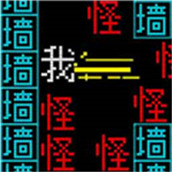最新下载
热门教程
- 1
- 2
- 3
- 4
- 5
- 6
- 7
- 8
- 9
- 10
PHP预定义接口使用学习笔记
时间:2022-06-24 17:07:06 编辑:袖梨 来源:一聚教程网
PHP预定义了6个接口介绍如下:
| Traversable | 遍历接口(检测一个类是否可以使用�0�2foreach�0�2进行遍历的接口) |
| Iterator | 迭代器接口(可在内部迭代自己的外部迭代器或类的接口) |
| IteratorAggregate | 聚合式迭代器接口(创建外部迭代器的接口) |
| OuterIterator | 迭代器嵌套接口(将一个或多个迭代器包裹在另一个迭代器中) |
| RecursiveIterator | 递归迭代访问接口(提供递归访问功能) |
| SeekableIterator | 可索引迭代访问接口(实现查找功能) |
1.Traversable遍历接口
呵呵!其实它不是一个在PHP中可以使用的接口,内部类才可使用,它有一个用途就是检测一个类是否可以遍历。
if($class instanceof Traversable) {
//foreach
}
2.Iterator迭代器接口
接口摘要:
Iterator extends Traversable
{
//返回当前索引游标指向的元素
abstract public mixed current(void)
//返回当前索引游标指向的元素的键名
abstract public scalar key(void)
//移动当前索引游标指向下一元素
abstract public void next(void)
//重置索引游标的指向第一个元素
abstract public void rewind(void)
//判断当前索引游标指向的是否是一个元素,常常在调用 rewind()或 next()使用
abstract public boolean valid(void)
}
以上可以让一个类实现一个基本的迭代功能,如下可以看到迭代的调用顺序:
class myIterator implements Iterator {
private $position = 0 ;
private $array = array(
"firstelement" ,
"secondelement" ,
"lastelement" ,
);
public function __construct () {
$this -> position = 0 ;
}
function rewind () {
var_dump ( __METHOD__ );
$this -> position = 0 ;
}
function current () {
var_dump ( __METHOD__ );
return $this -> array [ $this -> position ];
}
function key () {
var_dump ( __METHOD__ );
return $this -> position ;
}
function next () {
var_dump ( __METHOD__ );
++ $this -> position ;
}
function valid () {
var_dump ( __METHOD__ );
return isset( $this -> array [ $this -> position ]);
}
}
$it = new myIterator ;
foreach( $it as $key => $value ) {
var_dump ( $key , $value );
echo "\n" ;
}
3.IteratorAggregate聚合式迭代器接口
接口摘要:
IteratorAggregate extends Traversable {
//获取外部迭代器
abstract public Traversable getIterator ( void )
}
getIterator是一个Iterator或Traversable接口的类的一个实例。如下获取外部迭代器实现迭代访问。
class myData implements IteratorAggregate {
public $property1 = "Public property one" ;
public $property2 = "Public property two" ;
public $property3 = "Public property three" ;
public function __construct () {
$this -> property4 = "last property" ;
}
public function getIterator () {
return new ArrayIterator ( $this );
}
}
$obj = new myData ;
foreach( $obj as $key => $value ) {
var_dump ( $key , $value );
echo "\n" ;
}
4.ArrayAccess数组式访问接口
接口摘要:
ArrayAccess {
/* 方法 */
abstract public boolean offsetExists ( mixed $offset ) //检查偏移位置是否存在
abstract public mixed offsetGet ( mixed $offset ) //获取一个偏移位置的值
abstract public void offsetSet ( mixed $offset , mixed $value ) //设置一个偏移位置的值
abstract public void offsetUnset ( mixed $offset ) //复位一个偏移位置的值
}
如下可像访问数组一样访问对象:
class obj implements arrayaccess {
private $container = array();
public function __construct () {
$this -> container = array(
"one" => 1 ,
"two" => 2 ,
"three" => 3 ,
);
}
public function offsetSet ( $offset , $value ) {
if ( is_null ( $offset )) {
$this -> container [] = $value ;
} else {
$this -> container [ $offset ] = $value ;
}
}
public function offsetExists ( $offset ) {
return isset( $this -> container [ $offset ]);
}
public function offsetUnset ( $offset ) {
unset( $this -> container [ $offset ]);
}
public function offsetGet ( $offset ) {
return isset( $this -> container [ $offset ]) ? $this -> container [ $offset ] : null ;
}
}
$obj = new obj ;
var_dump (isset( $obj [ "two" ]));
var_dump ( $obj [ "two" ]);
unset( $obj [ "two" ]);
var_dump (isset( $obj [ "two" ]));
$obj [ "two" ] = "A value" ;
var_dump ( $obj [ "two" ]);
$obj [] = 'Append 1' ;
$obj [] = 'Append 2' ;
$obj [] = 'Append 3' ;
print_r ( $obj );
5.Serializable序列化接口
接口摘要:
Serializable {
/* 方法 */
abstract public string serialize ( void ) //对象的字符串表示
abstract public mixed unserialize ( string $serialized ) // 构造对象
}
实现该接口的类不再支持__sleep()和__wakeup()。使用很简单,只要序列化对象时serialize方法会被调用,当反序列化时,unserialize方法被调用。
class obj implements Serializable {
private $data ;
public function __construct () {
$this -> data = "My private data" ;
}
public function serialize () {
return serialize ( $this -> data );
}
public function unserialize ( $data ) {
$this -> data = unserialize ( $data );
}
public function getData () {
return $this -> data ;
}
}
$obj = new obj ;
$ser = serialize ( $obj );
print_r($ser);
$newobj = unserialize ( $ser );
print_r($newobj);
6.Closure
接口摘要:
Closure {
/* 方法 */
__construct ( void ) //用于禁止实例化的构造函数
public static Closure bind ( Closure $closure , object $newthis [, mixed $newscope = 'static' ] ) //复制一个闭包,绑定指定的$this对象和类作用域。
public Closure bindTo ( object $newthis [, mixed $newscope = 'static' ] ) //复制当前闭包对象,绑定指定的$this对象和类作用域。
}
class A {
private static $sfoo = 1 ;
private $ifoo = 2 ;
}
$cl1 = static function() {
return A :: $sfoo ;
};
$cl2 = function() {
return $this -> ifoo ;
};
$bcl1 = Closure :: bind ( $cl1 , null , 'A' );
$bcl2 = Closure :: bind ( $cl2 , new A (), 'A' );
echo $bcl1 (), "\n" ;
echo $bcl2 (), "\n" ;
相关文章
- 魔兽世界怀旧服Plus黑暗深渊联盟可接取任务一览 12-07
- tevi雷瓦纳斯隐藏招式触发条件攻略 12-07
- 绝区零拉力委托隐藏区域位置汇总 12-07
- tevi终焉的倒计时成就完成攻略 12-07
- 魔兽世界怀旧服Plus暴风城伍德位置一览 12-07
- 魔兽世界怀旧服Plus传递信仰任务攻略 12-07














